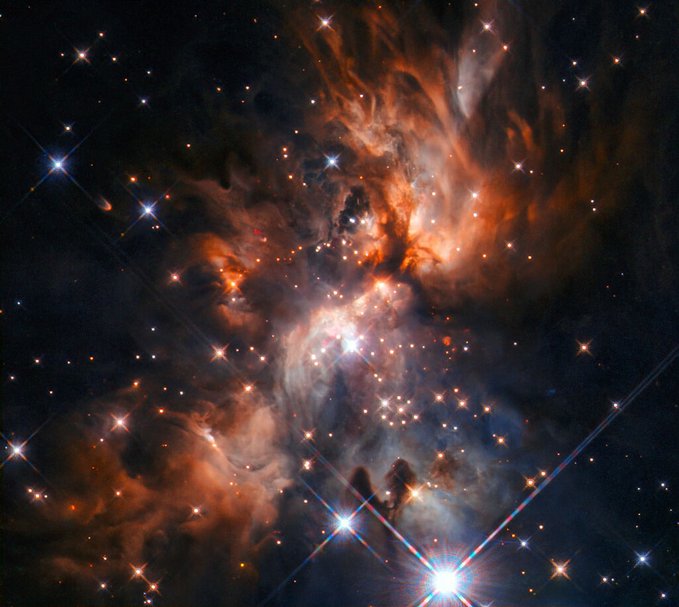The Hubble space telescope has photographed a star forming region named AFGL 5180 in the constellation Gemini. Stars form from interstellar dust that come together and the resulting eventual gravitational collapse and thermonuclear fusion at the core.
Detailed understanding on formation of the stars helps knowing of our own solar system better. Our Sun is a star and the eight planets
including Earth have formed with the remaining dust and matter after the formation of Sun.
The region between stars is called the interstellar region. AFGL 5180 is a star producing region in the Gemini constellation. Interstellar regions have dust clouds spanning to a distance of several light years.

The photograph is significant because the dust clouds in the star nurseries impede in getting into the details of the star formations. The Wide Field Camera 3 of Hubble through its infrared capability can image under such dust clouds, revealing lot more details than picturing at mere visibile light. At near infrared wavelengths dust can be transparent and light from baby stars inside these clouds can be visualised.
Stars take millions of years to form. There could be more than a millions of stars in the various stages of their making. The IR imaging comes handy in the study of these post infant star stages.
Information Root and Image Courtesy:
1. <<Image credits: ESA/Hubble & NASA, J. C. Tan (Chalmers University & University of Virginia),
R. Fedriani (Chalmers University); Acknowledgment: Judy Schmidt>>
References:
2.Infra Red imaging and Astronomy: https://www.astro.indiana.edu/irworkshop/trifid_teacher_guide.pdf
3.Star formations and the state of the art:https://www.almaobservatory.org/en/about-alma/how-alma-works/capabilities/star-and-planet-formation/